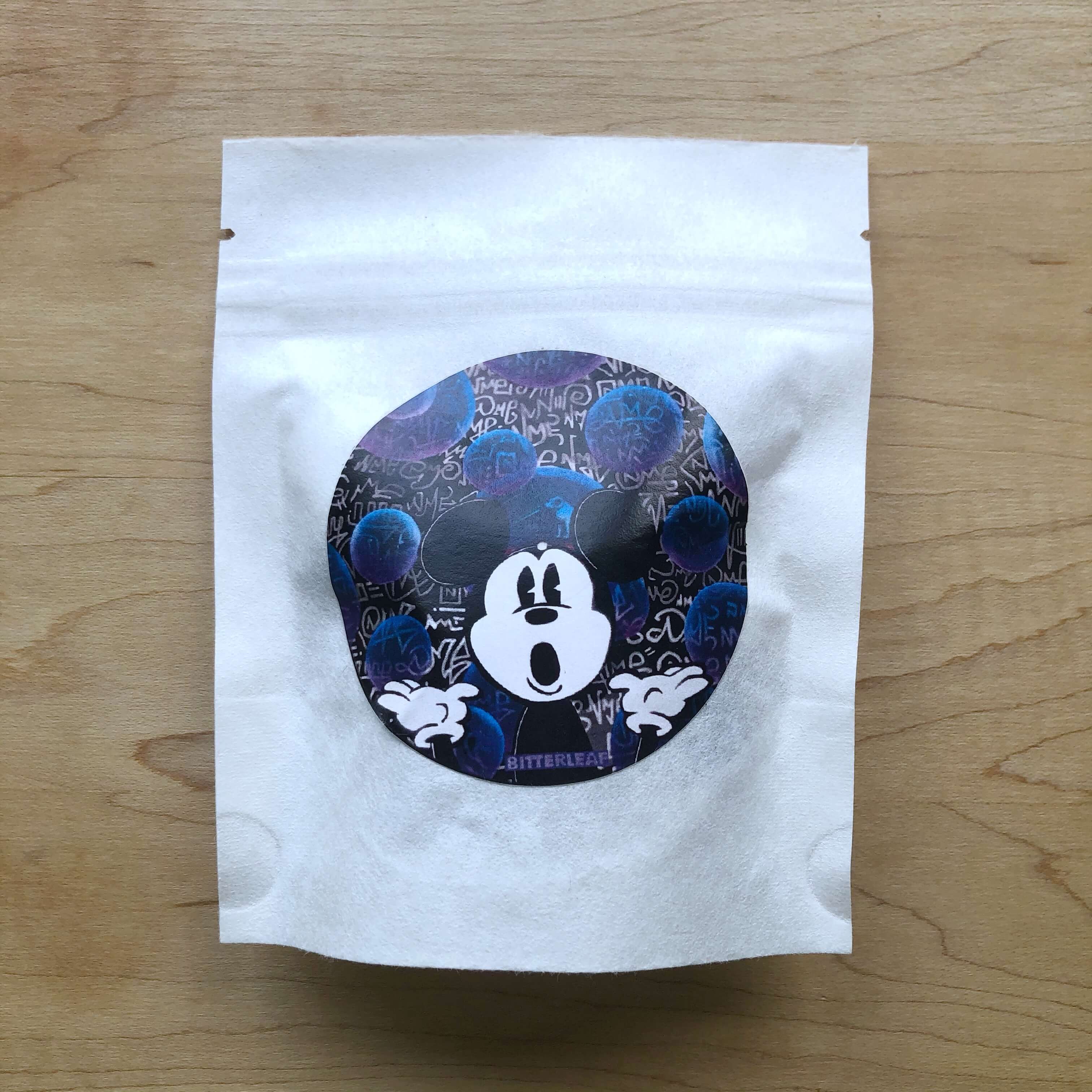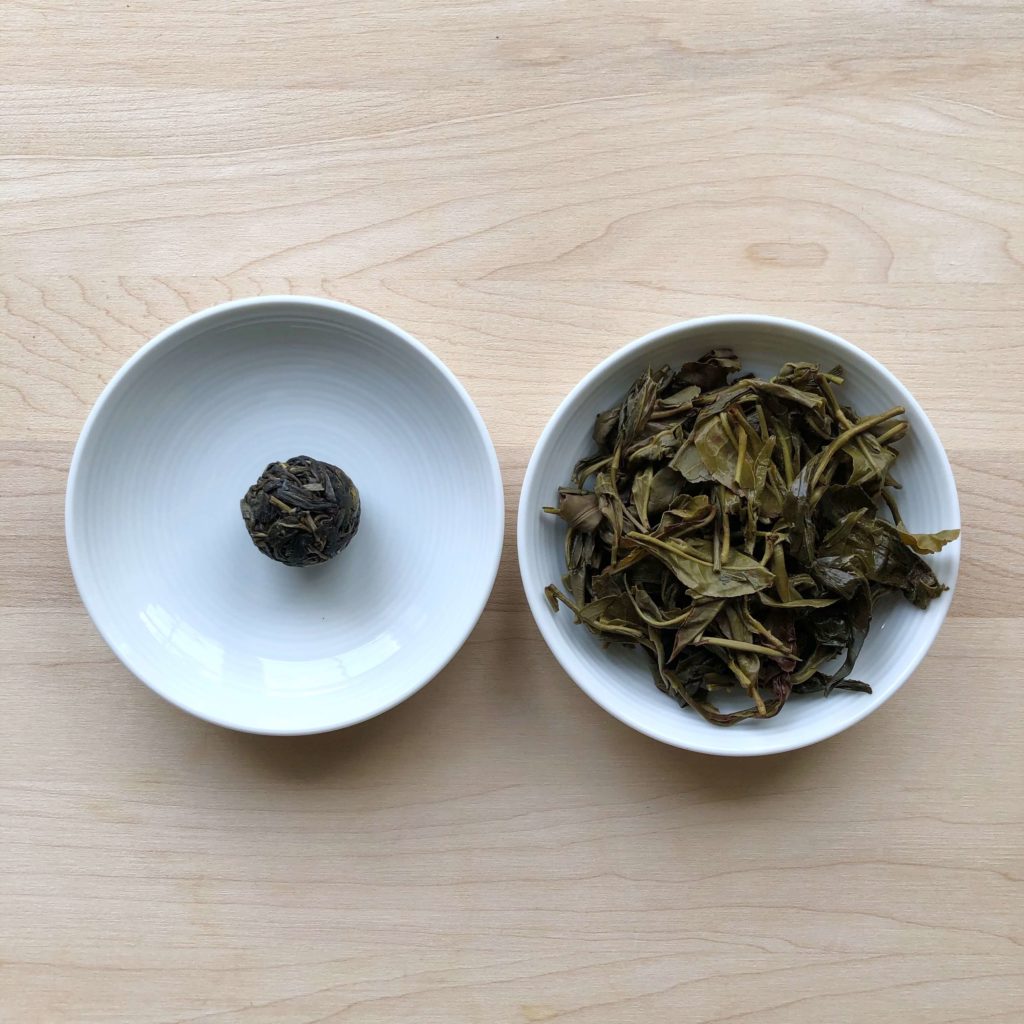
Since the Year of the Rat has come and gone, I wanted to make sure I drank this tea so it didn’t get left behind! The honey and fruit description sounded too lovely to not try.
Description: “[T]his tea presents classic Yiwu character, with a pleasant fragrance nice sweetness. Pressings from previous year have developed even more noticeable honey and fruit notes with storage.”
Instructions: 1 gram to 15 to 20 ml water ratio (100-120 ml gaiwan) | 95°C to boiling water | Rinse: 30 seconds; first brew: 15 seconds; second brew: 10 seconds, subsequent brews: +5 seconds per brew | Pre-warm teaware
Review: As I was assessing my past posts over the last few years, I realized that when it comes to puer(pu’er/pu-erh), I’m still quite a novice! Despite puer being what I associated with tea for many years due to afternoon dim sum as a child, it isn’t really something I tend to reach for. So, when I saw this tea described as “quite friendly and approachable,” it sounded perfect for me!
The tea was harvested from trees that started off as plantation terrace trees over 40 years ago that were fangyang (放养, or “left to grow”). The trees are only picked during the spring time.
I appreciated that the tea came in pre-portioned dragon balls so it was as easy as dropping the ball into a gawian and adding water! Each dragon ball was the size of a large gumball or marble and was tightly wrapped in white paper with a (not a micky) mouse label. There was a faint spring/grassy, floral, and vegetal smell emanating from the dragon balls.

Warmed Gaiwan: After warming the teaware and dropping the dragon ball in the gaiwan, the aroma of the dry leaves was a sweet honey and floral note. The tea ball was neatly wrapped and all leaves pointed in the same direction.
Rinse (30 seconds): Since it was such a long ‘rinse’, I decided to taste the liquor rather than pour it out. The liquor was a pale brassy yellow/tan colour, almost clear. It smelled and tasted like corn water with a slightly sweet, floral, and fruity linger on the tongue.
First Brew (15 seconds): The liquor was a constant yellow tan colour with a delicate grassy and floral smell like spring. Since it was a short infusion, there was only an inkling of a taste like sugar water, nectar, and flowers.
Second Brew (10 seconds): Despite the shorter infusion, there was a stronger floral smell and the liquor was less brassy yellow and more pale. The flavour was still subtle with a floral taste intermingled with steamed vegetables. There was some dryness at the back of the throat.
Third Brew (15 seconds): The pale yellow liquor was floral, sweet, honey, and fruity like honeydew.

Fourth Brew (20 seconds): By this infusion (without manually breaking it), the dragon ball had fully unfurled. The liquor had less sweet notes and a more vegetal smell and taste. The end of the sip ended with a faint bitterness and puckering.
Fifth Brew (25 seconds): Visually, the liquor was paler and slightly cloudy. There was a faint vegetal taste with some bitterness at the tail end of the sip.
Sixth Brew (30 seconds): Mostly astringency and a lingering taste.
After brewing, the wet leaves were mostly full leaves with steams and a range of olive green and muddy dark brown green. It had a vegetal and floral smell.

Since Bitterleaf also suggested also brewing “going by feeling” and using my own intuition, I wanted to see how it would compare to the guided recommendations. When I brewed on my own, I added a few extra seconds to each infusion.
Therefore, I reached the steamed vegetable notes (that I tasted in the Second and Fourth brew) fairly early on. The dragon ball also had more time to unfurl which meant the astringency was a bit stronger and the leaves were spent by infusion five.
Overall, I feel this tea lived up to being a beginner-friendly puer. It had a nice range of honey, floral and vegetal notes, none that were overpowering. This would be a good introduction to puer for someone who already enjoys green or oolong teas as it has a similar profile (more so oolong with the floral notes). The tea was gentle and reminiscent of spring, which is fitting as it was picked in early April (3/5 rating).
- Type: Pu-erh tea
- Origin: China, Yiwu
- Caffeine: Unknown
- Ingredients: Raw puer
- Company: Bitterleaf Teas
The question of the post: How do you spell “puer/pu’er/pu-erh”?
Edit: Nicole from Tea for Me Please kindly added my post in her weekly round-up! Make sure to check out all the posts from this week!
